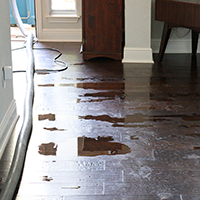Just How to Avoid Bathroom Water Damage
Just How to Avoid Bathroom Water Damage
Blog Article
Are you currently trying to find critical info on How to Fix a Water Damage Bathroom?

The washroom is exceptionally prone for damp build-up as well as prospective water damage as a result of the regular use of water in it. This short article provides easy inspection strategies to aid finding water damage threats.
The constant use water in the restroom makes it extremely vulnerable for wet build-up as well as potential water damages. By evaluating it frequently, you can decrease water related problems.
The complying with set of inspections is very easy to do and should be done as soon as in every three months in order to keep your washroom healthy and to stop prospective water damages brought on by the tub, the shower, pipe joints and also plumbing, sinks, cupboards, and the commode
Do not disregard carrying out these examinations as well as be comprehensive while executing them. Bear in mind that these simple assessments can save you a great deal of money by giving early signs for water damage
Bathtub as well as Shower
The shower and bath tub require unique attention and also maintenance. Check the ceramic tiles and change if cracked. Make certain that there is no missing cement between the ceramic tiles. Inspect as well as replace split caulking at joints where the walls satisfy the flooring or the bath tub. Obstructed drains pipes and pipelines issues will certainly stop the bathtub from drying out and might suggest serious issues beneath the tub. Speak with a specialist instantly to avoid structural damages. Pay attention to stainings or soft areas around the tub walls as they may show an interior leakage.
Plumbing
Signs for water damage are tough to spot given that many pipelines are installed inside the wall surfaces.
Pay special interest to floor covering and walls dampness and stains as they might show an unnoticeable plumbing issue. Examine moisture levels in adjoining areas too.
Sinks and Cabinets
Sinks as well as cupboards are revealed to moisture and humidity everyday and also are often neglected. Check consistently under the sink and on the countertop above it. Repair any kind of drip in the trap as it might recommend drain issues. Browse the sink, slow-moving draining pipes might show a blocked drain. Replace sink seals if they are fractured or loosened.
The Toilet
The bathroom is a prone water joint. Check the water lines and search for leakages around the commode seat, in the hose, and under the water storage tank. If you find any kind of indicators of moisture on the floor around the bathroom, look for leakages in the toilet edge and also tank seals.
Know that hanging commode dish deodorants increases the chances for blockages.
Water Damage Signs In The Bathroom To Avoid Cleanup
Musty smell
This is one of the easiest signs to catch because musty smells are so odorous. The damp, earthy, moldy smell should be a big red flag. The smell will develop when moisture gets trapped in surfaces, and begins to facilitate mold growth. Leaking pipes under cabinets, inside walls, and behind shower fixtures will cause moisture to stay trapped and not dry, which will lead to mold growth and spread. As soon as you notice any musty smells in your bathroom, have it checked for hidden water damage and cleanup signs.
Visible mold
If the smell isn’t there to give it away, sometimes you will actually see mold growth. Finding mold in your bathroom is a serious problem, because mold is very harmful to your health. By the time mold growth is visible, it also means that water damage has already occurred and been present for some time. The only way the mold problem can be resolved is to find the source of the moisture and get it stopped. To safely and adequately remove mold, you need to have professionals handle the remediation. Do not waste any time in getting mold problems addressed, fixed, and sanitized so that you can protect you and your family from the many respiratory symptoms caused by mold exposure.
Damaged floors
Bathroom floors should be able to withstand some exposure to water while still remaining in good condition. However, when excess exposure or water leaks occur, they will begin to damage even the most water-resistant flooring. If you notice any cracking, bubbling, staining, or warping on your bathroom floors, there is probably a water leak somewhere causing the distortion. If you notice areas of the floor have become softer, or even have a spongy feeling, there is probably damage to the subfloor. Subflooring is typically made up of plywood. When plywood is exposed to water or moisture, it will absorb it. Once it has become saturated, the weight of the excess water will cause the wood to swell and soften. Check the floors in your bathroom frequently to catch any of these sings before they lead to damaged subflooring.
Changes on walls
When water leaks behind walls, it will cause changes in the drywall. Peeling plaster, blistering paint, and soggy wallpaper are all good indicators that excess water is building up behind the wall. Water leaking behind drywall will cause it to swell and be soft to the tough. If you start to notice gaps along the trim of your walls, or where tile meets the wall, it could also be a strong indicator that there is a leak behind the wall. Any changes, distortion, or damage on the walls should be evaluated as soon as you notice it to prevent further water damage and cleanup.

I recently found that blog posting on How to Prevent Bathroom Water Damage while doing a search on the search engines. Enjoyed reading our write-up? Please share it. Help somebody else discover it. Thanks so much for going through it.
Source This Article Report this page